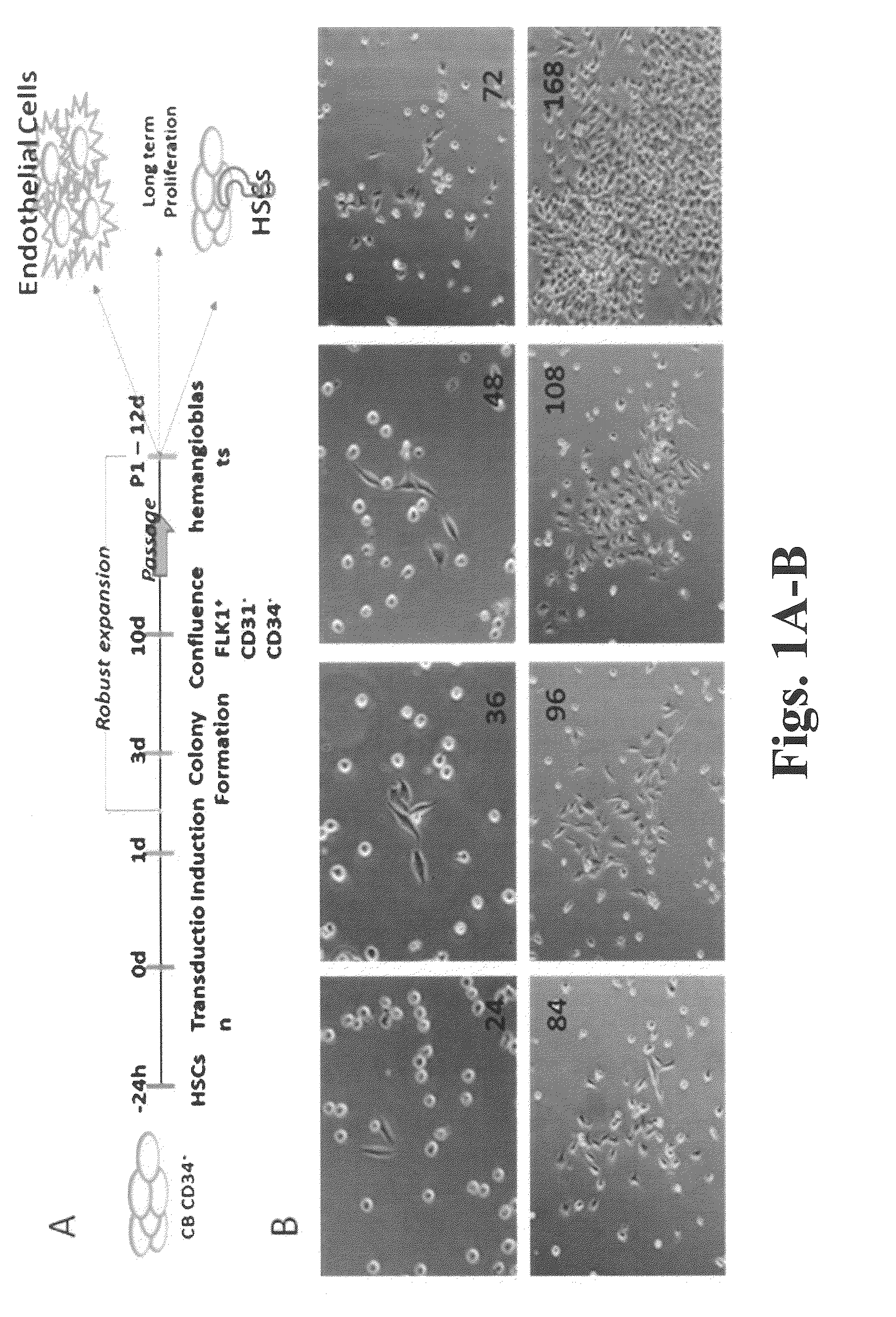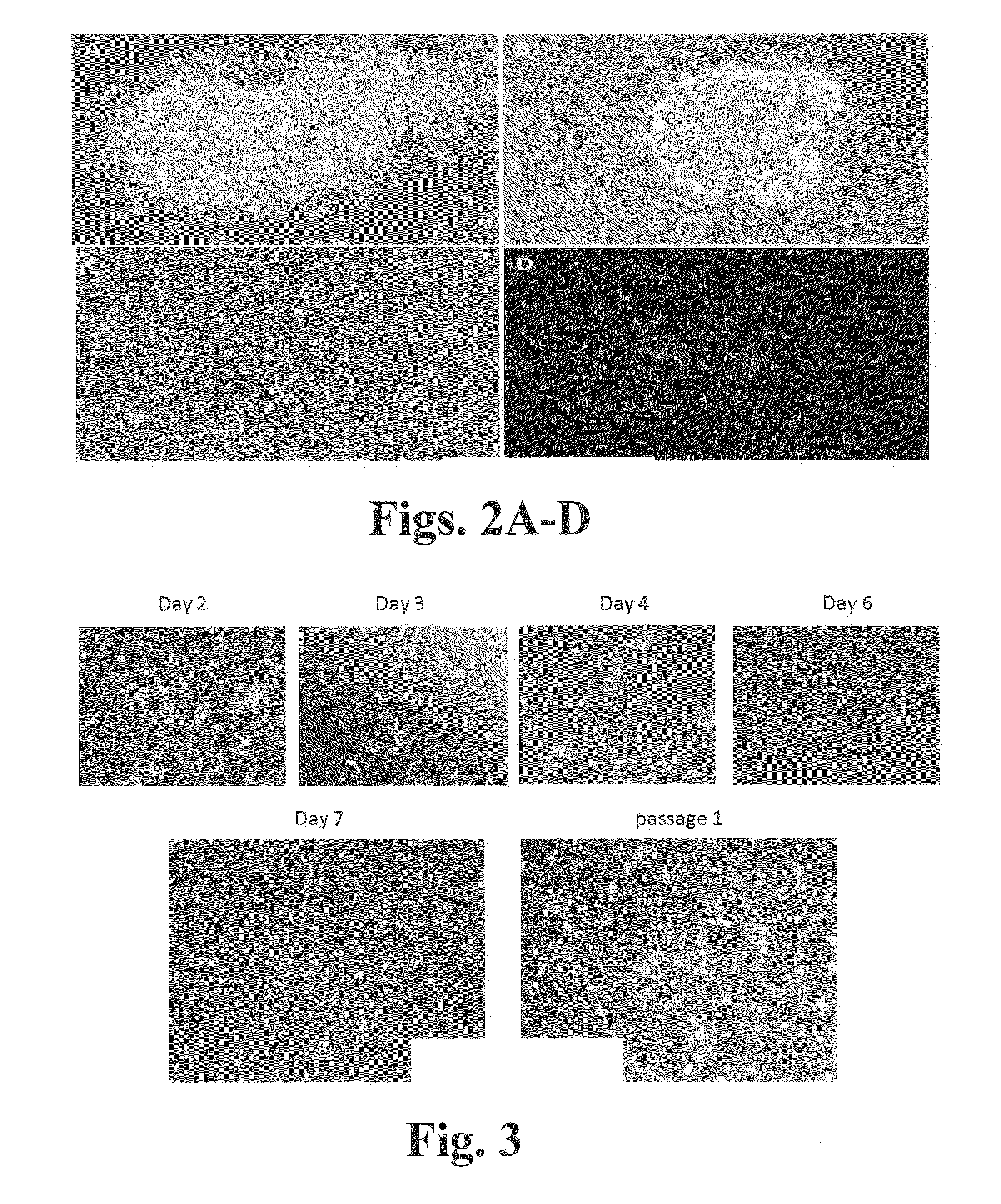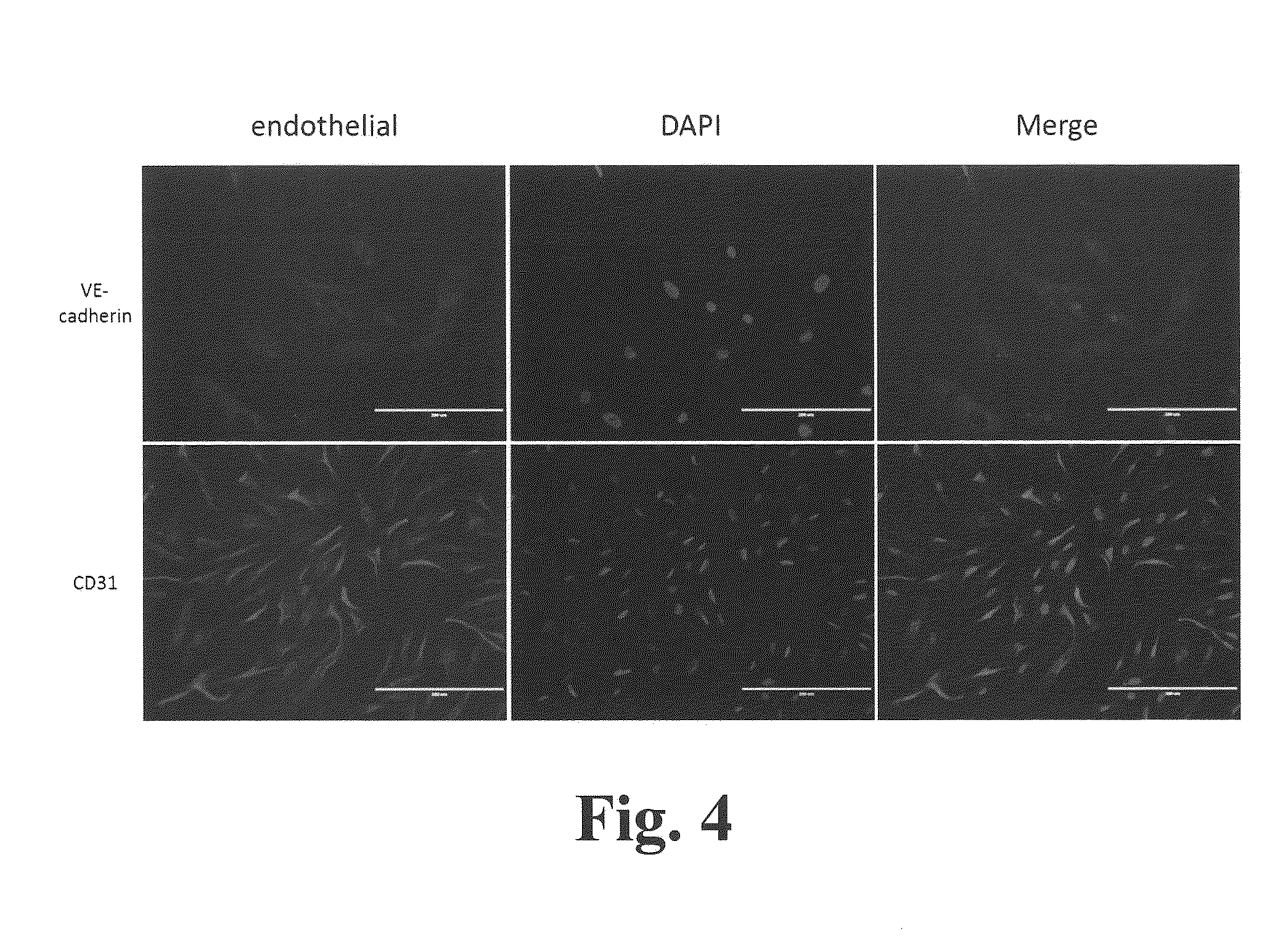Methods and compositions for expansion of stem cells and other cells
a technology of stem cells and compositions, applied in the field of stem cell and other cell expansion methods and compositions, can solve the problems of loss of beta-cell functions, shortening of hscs used in patient treatment related to bone marrow transplantation or genetics, and increasing the use of potentially curative therapy
- Summary
- Abstract
- Description
- Claims
- Application Information
AI Technical Summary
Benefits of technology
Problems solved by technology
Method used
Image
Examples
examples
Cell Cultures
[0227]CD34+ Cell Isolation.
[0228]CD34+ cells were isolated from cord blood or from peripheral blood of G-CSF-mobilized adult donors and cultured as follows. Mononuclear cells (MNCs) were isolated using a simple red blood cell lysis (15 minutes at room temperature using BD PharmLyse) or using Ficoll-Paque density gradient centrifugation (Jaatinen and Laine, Current Protocols Stem Cell Biol. 1:2A.1.1-2A.1.4. (2007)). The cells were then incubated with MACS CD34+ Microbead kit (Miltenyi Biotec, Auburn, Calif.) and run through a magnetic column resulting in selection for CD34+ cells. On average the percentage of CD34+ cells obtained from any given isolation had a purity range of 90-95% CD34+ cells. Human cortex neural stem cell (hcx NSC) cells were purchased from Millipore.
[0229]CD34+ cells were cultured in STEMSPAN medium (STEMCELL Technologies, Vancouver, BC, Canada) supplemented with 10% FBS, 100 ng / ml hSCF (human stem cell factor), 100 ng / ml hTPO (human thrombopoietin),...
PUM
| Property | Measurement | Unit |
|---|---|---|
| Density | aaaaa | aaaaa |
| Elongation | aaaaa | aaaaa |
Abstract
Description
Claims
Application Information
 Login to View More
Login to View More - R&D
- Intellectual Property
- Life Sciences
- Materials
- Tech Scout
- Unparalleled Data Quality
- Higher Quality Content
- 60% Fewer Hallucinations
Browse by: Latest US Patents, China's latest patents, Technical Efficacy Thesaurus, Application Domain, Technology Topic, Popular Technical Reports.
© 2025 PatSnap. All rights reserved.Legal|Privacy policy|Modern Slavery Act Transparency Statement|Sitemap|About US| Contact US: help@patsnap.com



